15 Dog Fence Ideas For Your Escape Artist Buddy
Need to keep your dog safe and sound in your backyard or house? Want to prevent them from running away or digging up your garden? These 15 dog fence ideas - including GPS dog fences - were built for your peace of mind.
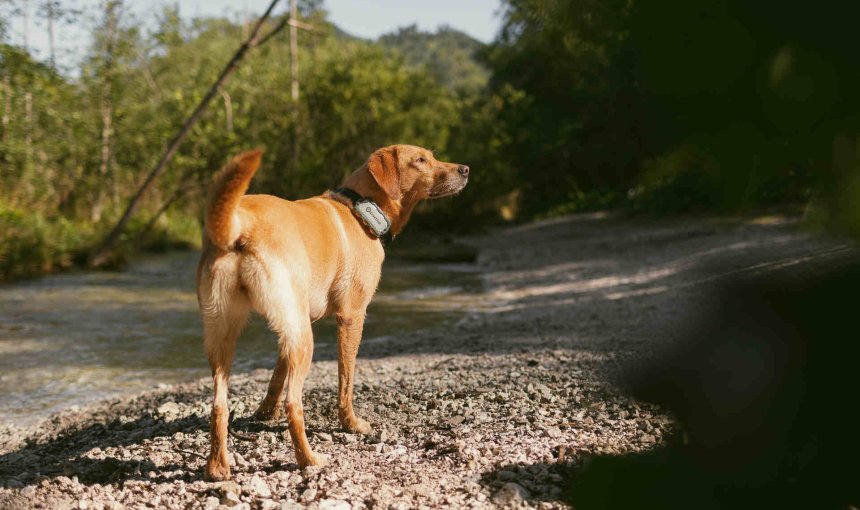
When it comes to dog fence ideas, there are plenty of options out there – outdoor or indoor dog fences, big or small dog fences, permanent or temporary dog fences. Perfect for if you’ve got an escape artist dog at home. So which should you choose? What’s most affordable, and what’s most reliable? Which material is best? In this guide, we’ll cover everything you need to know about different dog fences, including the pros, cons, costs and tips. So you can choose the best solution for you and your furry pal(s).
Key Takeaways
Physical fences come in a bunch of shapes and sizes
Consider your options when it comes to different materials like wood, metal, and brick. In some cases, a temporary fence might be enough.
Avoid using invisible/electric fences
Tractive does not recommend invisible fences that use electric shocks due to the potential for physical and psychological harm to dogs.
GPS dog fences are a humane alternative
A GPS-based virtual fence – like Tractive’s – can be a safe and humane alternative to a invisible one. It can alert you via notification through your mobile app when their dog leaves a designated “safe zone.” No need for any aversive methods.

Always know your buddy is healthy & safe
Read more- Key Takeaways
- Which kind of fence is best for my dog?
- What type of fence is cheapest for dogs?
- 15 outdoor dog fence ideas
- Extra safety steps in case your dog fence fails
Which kind of fence is best for my dog?
When it comes to finding the right fence for your dog, there are many options. But like with everything, you get what you pay for with dog fences. And just for reference: the average outdoor fence may cost you anything between $1600-7000 to set up – and ongoing costs for maintenance over time.1
But beyond price, there are many other factors. You could go with so-called temporary dog fences, or a permanent one. Then there’s the material. Some are made of organic stuff – like plants, wood, or stone – while some don’t even “physically” exist.
💡 Nowadays, there are virtual smart dog fences that don’t take up any space and use GPS to tell you if your buddy wanders off too far. In fact, the Virtual Fence feature is a key reason why many pet parents rely on their Tractive GPS Dog Tracker.
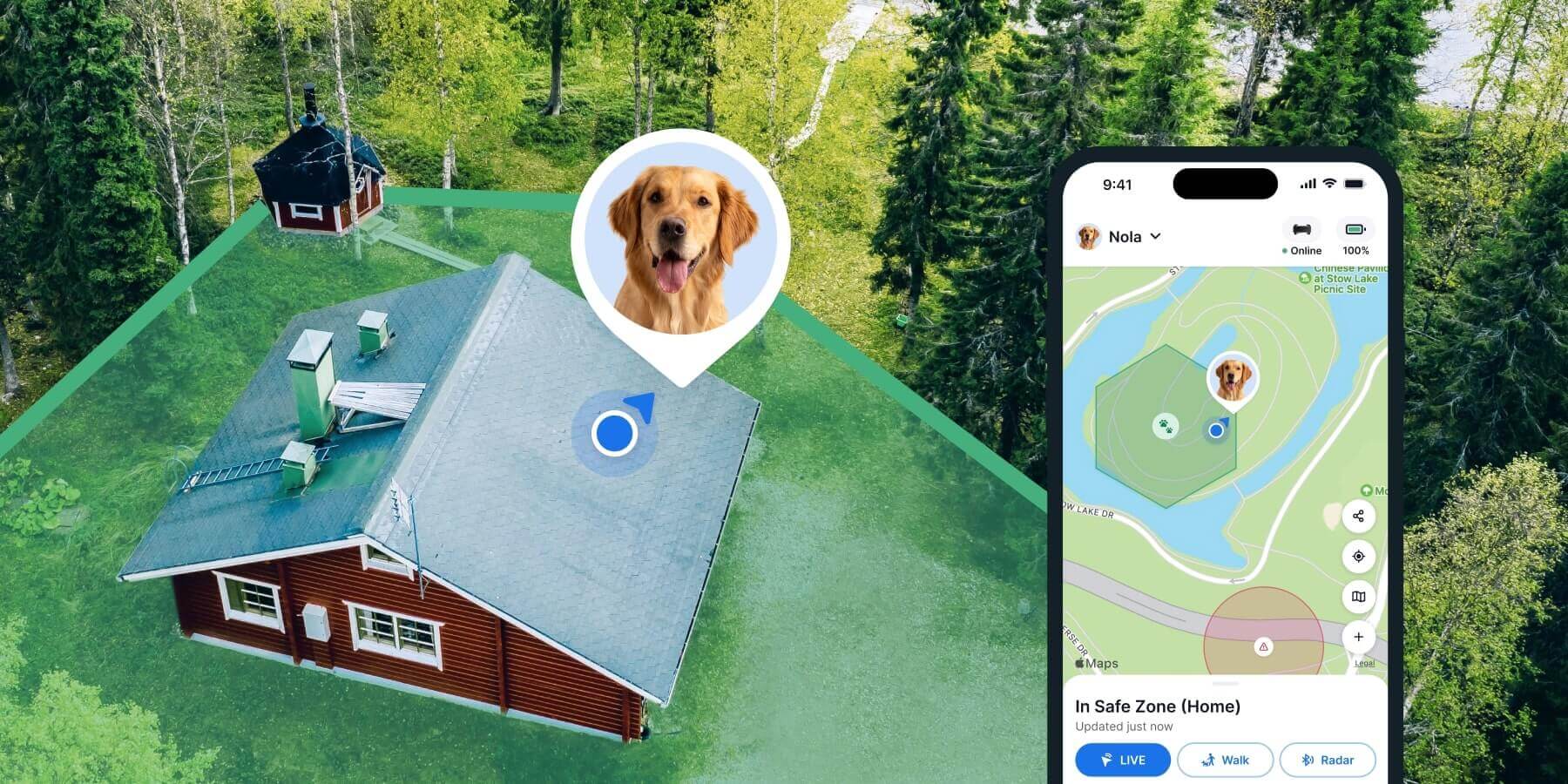
What type of fence is cheapest for dogs?
In general, your overall costs for installing a physical fence will depend on how many meters of fence you’re looking to install. (So the overall perimeter of your house and backyard.) But in general, here are a couple of dog fence ideas on the more affordable side:
- PVC deer block netting
- Metal wire fences, such as chain link
- Poultry netting
- Wood pallet fences
⚠️ Keep in mind, however, that inexpensive dog fences may not be the most durable choice in the long run.
Sound like a lot to think about? Worry not. We’ll go through each of the many dog fence ideas out there so you can choose the one that fits you.
15 outdoor dog fence ideas
Wooden dog fence
Dog fence idea #1: a good old fashioned wooden dog fence. With perks including its natural look, size customization, and privacy. Just keep in mind that curious dogs might be disappointed when they can’t watch the neighborhood activity. So consider adding a doggie window for your wooden dog fence, which you can easily buy online. Here are some options for wooden dog fences:
Picket dog fence
A picket fence is a good option for keeping your dog in the yard if you want to keep your property pretty. Picket fences fit well to most homes, and don’t look like dog fences at all. Usually, picket fences are smaller than other types of fencing, and may be a good choice if you have a small dog who can’t jump very high.
But don’t forget – picket fences are not likely to give you a ton of privacy.
Split-rail fence
Split-rail fencing is another great minimalistic and natural wood fencing option. Also known as a log fence, zigzag, worm or snake fence, it’s a typical fence option in the US and Canada. (Where it’s traditionally made from timber logs.) Since there are large gaps in the fence between the logs, make sure to reinforce any split-rail fencing with wire or another material to make sure it’s fully dog-proof. Else your buddy might slip through them.
DIY pallet dog fence
Love DIY projects? A pallet fence could be a good dog fence option for you. Considering you might even find old pallets for free, a cheap dog fence option too. Not to mention, it’s environmentally-friendly. You can customize and paint the pallet fence to your liking.
Pallets are ideal for protecting a flower bed or your garden from your dog. Plus, a pallet fence can withstand cold and warm temperatures. Just make sure that the fence is high enough, so that your dog can’t jump over it. Also, if necessary, you can buy prevention barriers to stop your dog from digging under the fence.
Metal dog fence
Next on our dog fence ideas list: metal dog fences. Which can double up as a safe and secure option, since they’re more durable than wooden fences. Metal is affordable and comes in several different options:
Chain link dog fence
Chain link dog fences are affordable, durable, low-maintenance, and easy to fix. Most importantly: your dog can watch people passing by. Which can prevent them from getting bored, anxious, or stressed out from being cooped up indoors.
💡Wondering how to keep your dog from digging under a chain link fence? Use a material at the base of the fence that will discourage them from further digging. (For example, you can bury chicken wire or use large rocks or boulders to do so.)
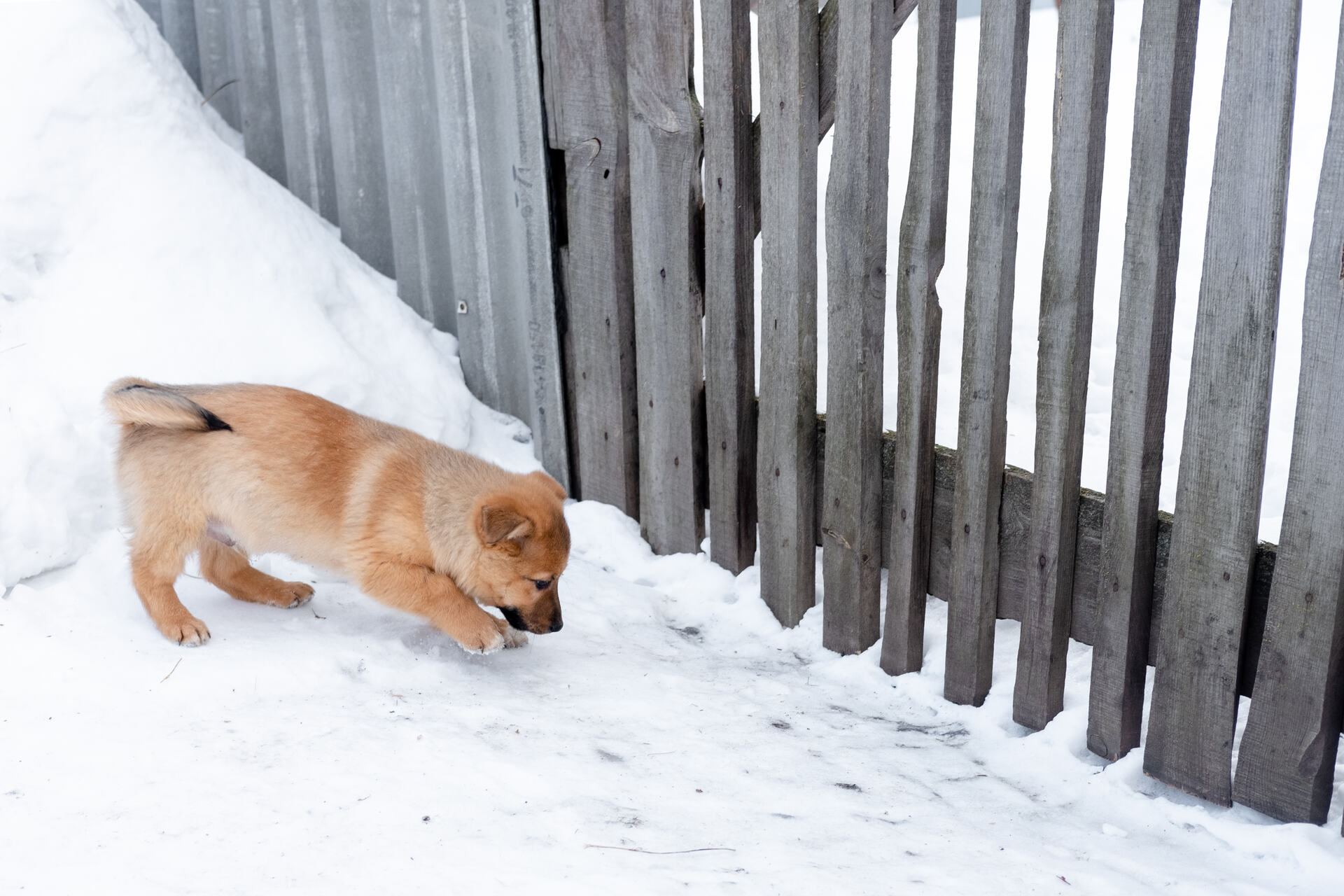
Ornamental steel or aluminum dog fence
Many fence companies offer aluminum or steel ornamental fences, which are sturdy, heavy-duty, and an attractive option that still allow for some visibility. And the best part? If you install it correctly, it’s unlikely your dog will hope over it. On the downside, ornamental steel fences can be quite pricey. But in the end, you’ll have have a more permanent solution.
Wire fence
With a more simple wire dog fence, you can get a quick, cheap, although less durable way of keeping your dog fenced in. And if you pick the right type of wire fence, it doesn’t have to look ugly in your backyard either. Chicken wire fence is one of the cheapest dog fence options out there. Other options include hardware, cloth, or hog wire. Wire fencing is suitable for DIY backyard projects, or for small dog fences.
Brick dog fence
For a (much more) permanent solution, a brick wall may be a good dog fence option. Brick is more expensive, but also a lot more durable. That means it can be quite cost-effective in the long run. A brick fence also needs little to no maintenance compared to a wooden fence. These are also ideal for large dogs due to their height, durability and stability.
Stone dog fence
Similarly, a stone dog fence is a natural, sustainable option which you can build from local stones or boulders. Just make sure your dog can’t use the stones to make a run (or jump) for it and escape. Stone fences offer a permanent and low-maintenance solution.
Plastic dog fence
Next on our list of dog fence ideas? Ones made out of plastic. That includes temporary, portable dog fences and DIY plastic fences. You can buy a fence kit online, which includes all the parts you need for an easy-to-assemble dog fence.
Polypropylene plastic fencing is one such type of dog fence. High-quality, durable, and UV-light resistant, you can use it to set up a portable dog fence, or use it for a more permanent set up. Though it makes sense to keep in mind: plastic is, naturally, a less sustainable material than wood, brick or stone. Good to keep in mind if you’re trying to do your bit to keep the planet in better shape!
⚠️ Just remember: if your dog chews off a bit of a plastic fence, it may cause a potentially fatal intestinal blockage. Get them to a vet immediately if you suspect they’ve swallowed a bit of plastic by mistake.2
Vinyl fencing
Vinyl fences are plastic-based, made from polyvinyl chloride (PVC). These won’t crack, rot, or splinter and require less maintenance in the long term. Vinyl fencing is easy to clean and generally low-maintenance.
However, vinyl fencing has plenty of downsides too. Including high initial costs, built from non-sustainable material, and damage from the weather – including from algae, mildew, or mold. Plus, much like plastic fences, a vinyl fence might cause your dog to get sick if they chew off or swallow a part of it by mistake. Which doesn’t make it an ideal option, especially if you’re building a fence in the hopes of keeping your buddy safe.
Temporary dog fence
If you don’t want to opt for a permanent, more expensive or time-consuming fence project, here are a couple of options for you:
- Portable dog fence
Even Amazon sells small portable dog fences these days – you can simply move them about as you need to. - DIY temporary dog fence
You can use many of the materials mentioned so far to make a fence to suit your needs, then take it down when you don’t need it anymore.
Indoor dog fence
If you just need a dog gate or pet barrier indoors, there are several options:
- Baby gate
Store-bought baby gates will fit most door frames inside your home and give you the option to open and close the gate as necessary. This option might make the most sense for you if you need to keep your dog outside of a certain area of your house. - DIY indoor pet barrier
You can also try making a custom dog gate with just a few supplies from your local hardware store. Some materials to consider for your DIY indoor pet barrier: recycled wood, plexiglass, spring rods, PVC pipes and fabric. - Dog crate or playpen
You can buy these online for a simple, affordable solution for keeping your dog in place. But since they tend to be small and restrict your dog’s movement, don’t keep your dog confined to the crate or playpen for too long.
Invisible dog fence / electric dog fence
Invisible dog fences allow you to keep an open yard, all while keeping your dog contained. In the US, these can cost anywhere from $200 to $2,500.3 The final cost depends on factors like the size of your backyard, type of fence, number of dogs, terrain type, and whether you need to pay for a professional dog trainer.
If your dog tries to leave the fence boundary, they will get a small electric shock. Over time, this is meant to train your dog to stay in the fenced area.

⚠️ Tractive does not recommend using electric dog fences or shock collars.
They can cause physical and/or psychological harm to dogs, as they rely on negative reinforcement and painful punishments.
The shock your dog receives from an invisible dog fence may even encourage them to run away, if they associate the painful shock with your backyard.4
Underground dog fence
With an underground dog fence, you use a buried wire and transmitter to send a radio signal through the wire, creating a boundary. One of the biggest pros of this fence is that you can create a custom layout to suit your needs. They are also relatively cheap and easy to install, and you won’t have a problem with digging or an unsightly physical fence or visual barrier.
⚠️ But remember that an underground dog fence is a shock fence, which is not likely to be pleasant for your buddy.
Wireless dog fence
Wireless dog fences also use radio signals to create a boundary, but don’t use wires to draw a boundary. Instead, it creates a “circle” that expands out from a central point or transmitter. These are even easier to set up than underground dog fences.
At the same time, wireless dog fences require dog training. They’re generally not suited for yards larger than three quarters of an acre. (Or around 3000 square meters.)
And finally for the safe, smart, affordable option…
GPS dog fence
A GPS-powered, virtual dog fence is a great, safe (and humane) alternative to an electric dog fence.
With a Virtual Fence, there’s no need for a physical or electric barrier, nor a physical fence that takes up lots of space in your property. Instead, you’ll simply get an escape alert once your dog leaves a “safe zone” – like your yard – and when they’re back home.
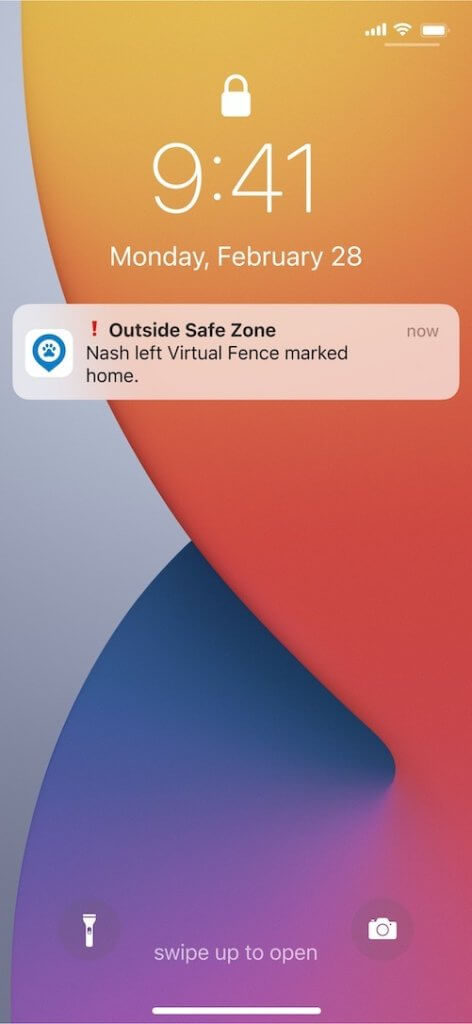
And here are a couple of extra perks you’ll find with a Tractive GPS Virtual Fence:
- A one-time upfront cost – and ongoing costs priced less than your monthly Netflix subscription
- Less than 5 minutes of setup time
- Set up to 5 customizable fences – for lawns and backyards of every shape and size
Most importantly, the Tractive GPS Virtual fence is a vet-friendly and pet-friendly option with zero shocks. So with just a glance at your phone, you can prevent your buddy from jumping the fence or escaping from home – every time.
Extra safety steps in case your dog fence fails
- Ensure your dog is easy to identify
With their very own ID tag and collar. (So they don’t get mistaken for a stray.) - Get your dog microchipped
A microchip is a permanent ID tag for your dog. It can help a vet or local shelter identify you as the rightful owner in case your dog goes missing. - Use a GPS dog tracker on your dog’s collar
Especially as a backup safety precaution. So you’ll be able to track down your dog in real-time in case they escape – or get stolen.
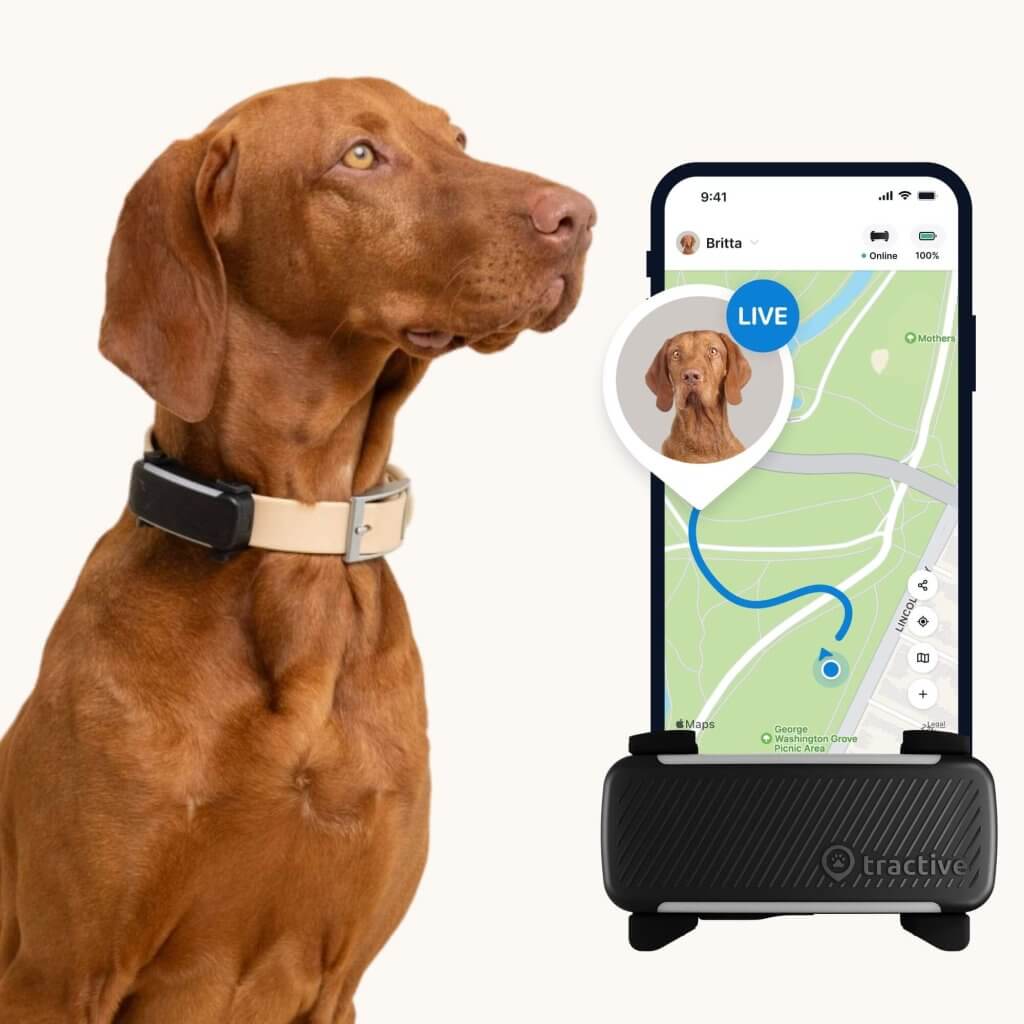
Follow your dog anywhere
Get real-time location information, wherever they go. And find out when they try to make an escape, or just when they go somewhere they shouldn’t, with Virtual Fences.
So there you have it, 15 dog fence ideas to keep your canine companion safely secured inside your home or yard.
And if you’ve liked this post, share it with a friend or a loved one – and let’s help build a safer, kinder world for our furry friends together.



